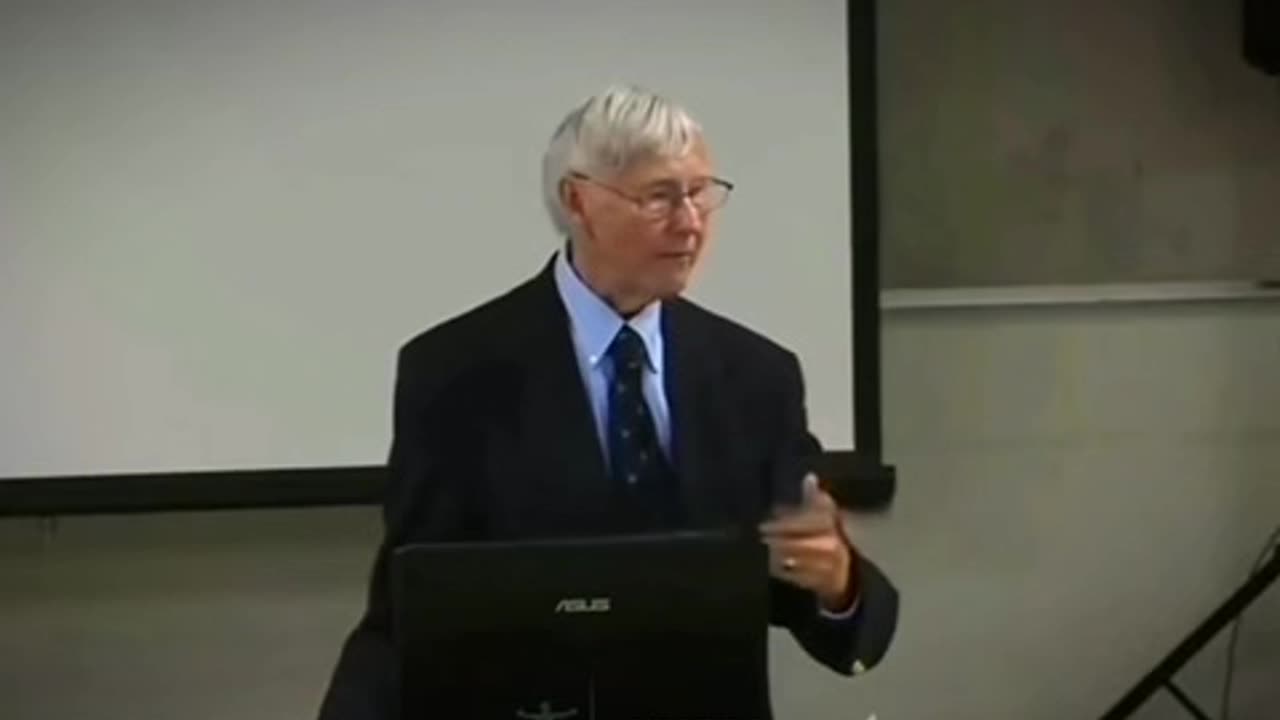Premium Only Content

Rethinking Modern Medicine: The Risks and Limits of Allopathic Healthcare
The notion that modern medicine itself could be a leading cause of death is provocative, but there’s growing evidence to support the claim. According to some estimates, iatrogenic deaths—those caused by medical interventions, including medication errors, hospital-acquired infections, and surgical complications—are responsible for up to a million deaths each year in the United States alone. This staggering number has led some to question not just the efficacy of our healthcare system, but the very foundations of allopathic medicine, a system that primarily treats symptoms through pharmacology and invasive procedures. By examining these failures, and contrasting them with ancient medical practices, we might see an alternative path forward for a more holistic, science-informed approach to health.
The Reality of Iatrogenic Death: Medicine as a Leading Cause of Mortality
Iatrogenesis refers to any adverse effect or complication resulting from medical treatment. According to a study published in BMJ, medical errors alone could be the third leading cause of death in the U.S., behind only heart disease and cancer. The broader scope of iatrogenic deaths includes not just direct errors but also adverse drug reactions, hospital-acquired infections, and surgical complications.
Adverse drug reactions (ADRs) are one of the most common contributors to iatrogenic death. As the pharmaceutical industry grows, so does the reliance on medication, sometimes with multiple prescriptions stacking up for a single patient, known as polypharmacy. While some of these drugs are lifesaving, others may carry severe side effects that outweigh their benefits. Unfortunately, the overprescription of drugs, often influenced by pharmaceutical marketing, has led to an increase in these unintended consequences.
Unscientific Training: The Disconnect Between Medical Education and Science
The structure of modern medical education has come under scrutiny for focusing disproportionately on pharmacological and surgical interventions. Critics argue that 85% of what’s taught is “unscientific” or overly symptom-focused, prioritizing the suppression of symptoms rather than addressing root causes. Medical schools receive substantial funding from pharmaceutical companies, and the curriculum reflects this influence, often sidelining courses on nutrition, holistic medicine, and lifestyle interventions that are proven to prevent chronic illnesses.
The development of allopathic medicine has historically centered on treating acute symptoms, which, while essential for trauma care and emergencies, can fall short when addressing chronic, lifestyle-related diseases. Chronic illnesses such as diabetes, cardiovascular disease, and autoimmune disorders often have underlying causes related to diet, environmental exposure, and stress. Yet, doctors are often limited to prescribing medications that manage these conditions rather than treating the root causes.
Pharmaceutical Industry Influence: The Economics of Treatment Over Prevention
The global pharmaceutical industry is valued at over $1 trillion, making it one of the most powerful economic forces worldwide. This influence affects everything from drug approval processes to what treatments are covered by insurance, often prioritizing profitable treatments over accessible, preventive care.
The economic incentive is clear: treating symptoms of chronic illness creates a continuous revenue stream, while prevention and cure—although potentially more effective—yield fewer profits in the long run. With corporate profit at the forefront, drugs that may only offer marginal improvements are often heavily marketed and prescribed, despite safer, less invasive alternatives. This profit-driven approach leads to an overemphasis on drug therapies and underinvestment in lifestyle-based, preventative medicine.
Comparing Ancient and Modern Medicine: Alternative Perspectives
Contrasting allopathic medicine with older systems, such as Traditional Chinese Medicine (TCM) and Ayurveda, reveals stark differences in philosophy and approach. Both TCM and Ayurveda have been practiced for thousands of years and are based on a holistic understanding of the body, recognizing the interconnectedness of physical, mental, and environmental health.
• Traditional Chinese Medicine (TCM): TCM emphasizes balance within the body and with the environment, focusing on the body’s energy flow (Qi) and natural healing processes. Techniques like acupuncture, herbal remedies, and Qi Gong are used to restore balance, aiming to treat the root cause rather than just the symptoms. TCM’s longevity as a medical practice suggests that it addresses aspects of health overlooked in Western medicine.
• Ayurveda: Originating in India, Ayurveda is based on the concept of balancing the body’s doshas, or energies, and using diet, herbal treatments, and meditation to prevent disease. Ayurveda prioritizes disease prevention, recognizing the role of mental well-being and environmental factors in physical health. Unlike Western medicine, which typically intervenes when disease is present, Ayurveda emphasizes lifestyle changes to maintain health over a lifetime.
These ancient approaches offer valuable insights that could supplement allopathic methods, particularly in treating chronic illnesses. They emphasize balance, preventive care, and treating the individual as a whole, concepts that Western medicine often overlooks.
The Path Forward: Integrating Modern Science with Holistic Approaches
A comprehensive approach to healthcare would combine the strengths of allopathic medicine in acute care with the preventive and holistic perspectives of traditional practices. This would involve rethinking medical education, shifting from a pharmaceutical-centric model to one that emphasizes diet, exercise, mental health, and the natural environment’s role in health. Such an approach could reduce dependency on drugs, minimize adverse effects, and lower the incidence of iatrogenic death.
Potential solutions could include:
1. Revised Medical Education: Medical schools could broaden their curriculums to include integrative health, emphasizing nutrition, stress management, and non-pharmaceutical treatments as primary care methods.
2. Holistic Healthcare Models: Hospitals and clinics could employ both allopathic and holistic practitioners to offer patients a wider range of treatment options, allowing for personalized care that considers physical, mental, and spiritual health.
3. Regulatory Reforms: Transparency in pharmaceutical marketing and increased funding for research on alternative therapies would help reduce the profit-driven approach that currently dominates healthcare.
4. Patient Empowerment: Educating patients about their health and offering resources for preventive care can help reduce unnecessary medical interventions. Informed patients are better equipped to make choices aligned with long-term health rather than short-term symptom management.
Conclusion: The Future of Medicine Lies in Balance
The U.S. healthcare system is undeniably effective in trauma care and emergency intervention but falls short in addressing the chronic health crises facing modern society. With iatrogenic deaths at alarmingly high rates, it’s clear that a reliance on pharmaceuticals and symptom-focused care has significant downsides. Bridging the gap between allopathic methods and ancient healing philosophies could create a healthcare system that values prevention, balance, and the holistic well-being of patients.
As we confront an ever-increasing chronic illness burden and seek to reduce unnecessary medical interventions, the integration of scientific advancements with traditional health principles offers a pathway to sustainable healthcare that benefits both individuals and society. In this way, medicine can evolve beyond its current limitations, creating a future where health is rooted in balance, not profit, and where healing addresses the whole person, not just the symptoms they present.
-
 6:29
6:29
BIG NEM
17 hours agoCultivating God Mode: Ancient Taoist NoFap Practices
2.17K1 -
 30:53
30:53
Uncommon Sense In Current Times
1 day ago $0.02 earned"Pardon or Peril? How Biden’s Clemency Actions Could Backfire"
10.1K -
 40:01
40:01
CarlCrusher
15 hours agoSkinwalker Encounters in the Haunted Canyons of Magic Mesa - ep 4
2.4K2 -
 59:44
59:44
PMG
1 day ago $0.16 earned"BETRAYAL - Johnson's New Spending Bill EXPANDS COVID Plandemic Powers"
22.1K -
 6:48:50
6:48:50
Akademiks
13 hours agoKendrick Lamar and SZA disses Drake and BIG AK? HOLD UP! Diddy, Durk, JayZ update. Travis Hunter RUN
151K27 -
 11:45:14
11:45:14
Right Side Broadcasting Network
9 days agoLIVE REPLAY: TPUSA's America Fest Conference: Day Three - 12/21/24
336K28 -
 12:19
12:19
Tundra Tactical
13 hours ago $12.62 earnedDaniel Penny Beats Charges in NYC Subway Killing
60K12 -
 29:53
29:53
MYLUNCHBREAK CHANNEL PAGE
1 day agoUnder The Necropolis - Pt 1
151K51 -
 2:00:10
2:00:10
Bare Knuckle Fighting Championship
3 days agoCountdown to BKFC on DAZN HOLLYWOOD & FREE LIVE FIGHTS!
54K3 -
 2:53:01
2:53:01
Jewels Jones Live ®
1 day agoA MAGA-NIFICENT YEAR | A Political Rendezvous - Ep. 103
146K36